1862: First Homestead Act encourages settlement in the West by giving land to applicants if they live on their parcel and grow crops for at least five years.

A homestead claim filed in 1863.
CREDIT: U.S. NATIONAL ARCHIVES AND RECORDS ADMINISTRATION
1862: Pacific Railway Act approves construction of transcontinental railroad, easing transport of crops, cattle and farming machinery.
1862, 1890: Morrill Acts grant large chunks of land to states to establish universities focused on agricultural studies. “Land grant” colleges are born.
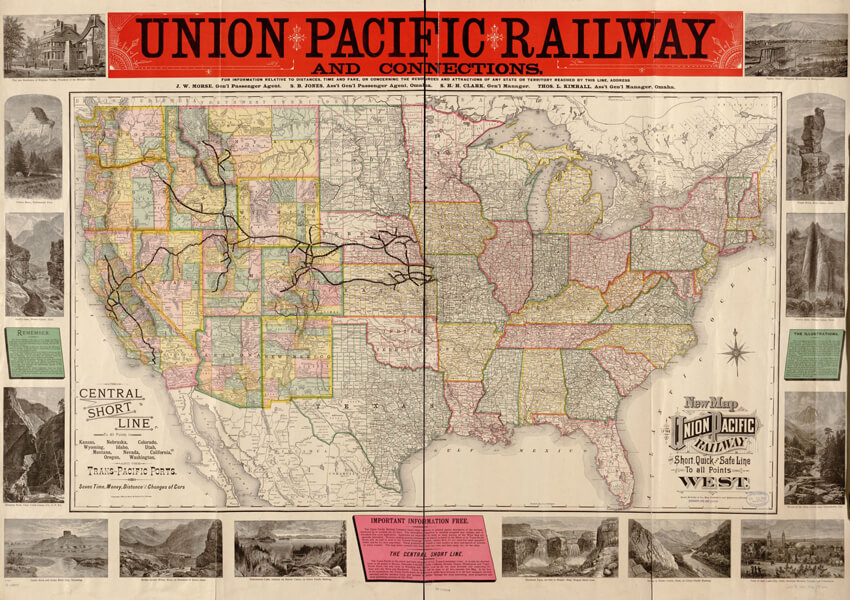
Union Pacific Railway map, 1883.
CREDIT: LIBRARY OF CONGRESS, GEOGRAPHY AND MAP DIVISION
1862: U.S. Department of Agriculture established. President Lincoln calls it “the people’s department.”
1870s-1890s: “Bonanza” farming transforms sections of the prairie into continuous fields of wheat with giant factory farms some more than 10,000 acres.
1887: Hatch Act funds a system of state agricultural experiment stations at land grant colleges to conduct research on all things agricultural.
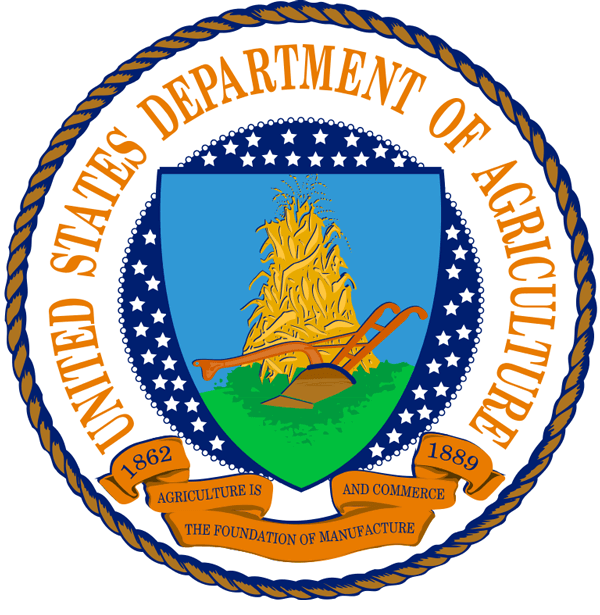
Early USDA seal, 1895.
CREDIT: USDA
1900: Forty-one percent of American workforce is employed in agriculture.
1914: Smith-Lever Act establishes a cooperative extension service to do outreach to farmers, sharing knowledge gained at experiment stations and universities.

Agriculture poster from World War I.
CREDIT: U.S. NATIONAL ARCHIVES AND RECORDS ADMINISTRATION
1917: America enters World War I. “Food Will Win the War” campaign galvanizes farmers. More than one billion bushels of grain exported to feed US armies and allies.
1929: Stock market crashes, Great Depression begins.
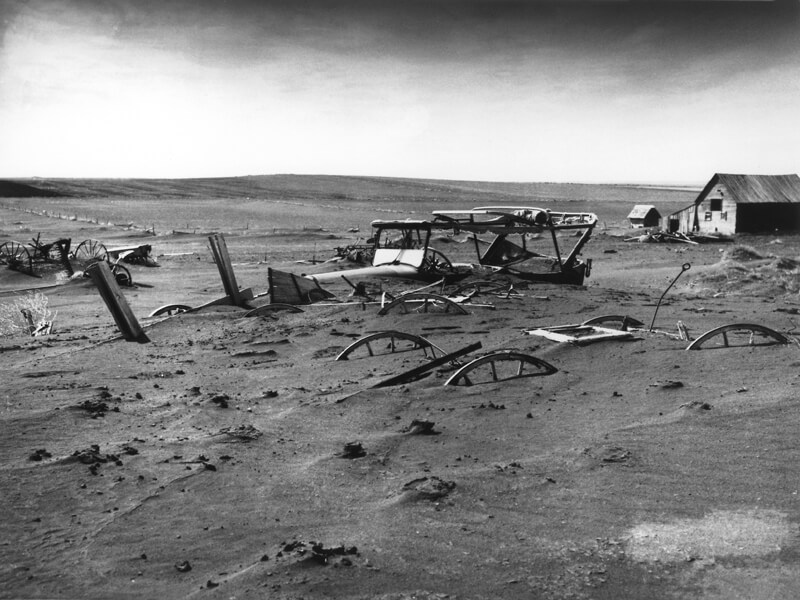
Bleak 1936 Dust Bowl scene in South Dakota.
CREDIT: USDA
1930s: Drought and severe midwestern dust storms create the Dust Bowl. Soil erosion declared a “national menace”; thousands of families abandon their farms.
1930: Number of horses and mules used for work power: 18.7 million. Number of tractors: 920,000.

New Mexico farmer reviews details of original US Farm Bill with county agriculture official, 1934.
CREDIT: USDA
1933: First comprehensive Farm Bill (Agricultural Adjustment Act). Federal government tries to raise sagging prices by managing supply of agricultural products like wheat, cotton and milk by paying farmers to limit what they produce.

Early poster from the Rural Electrification Administration.
CREDIT: NATIONAL AGRICULTURAL LIBRARY
1936: Rural Electrification Act expands electricity to rural America.
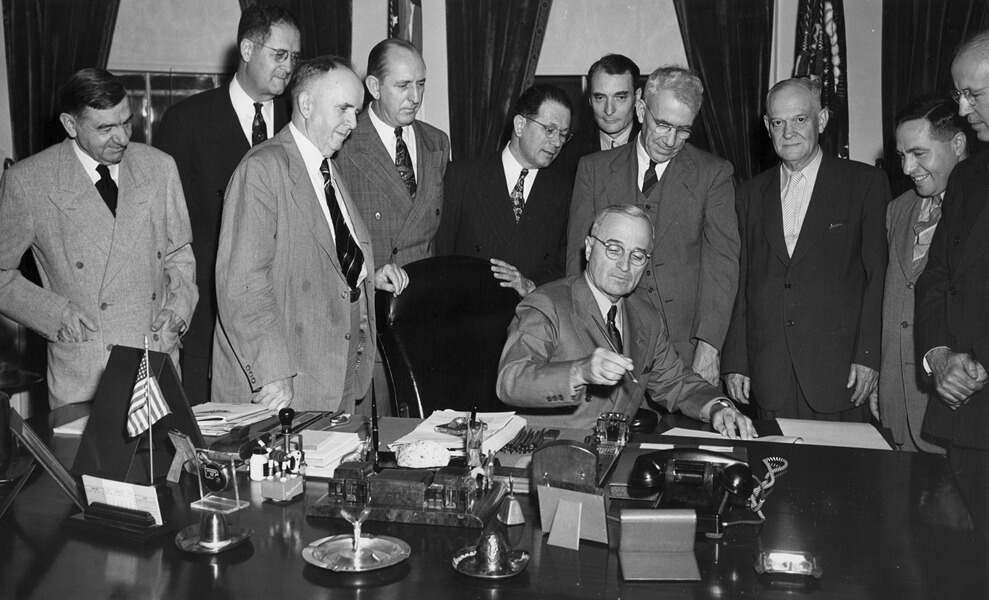
President Harry Truman signs the National School Lunch Act on June 4, 1946.
CREDIT: U.S. NATIONAL ARCHIVES AND RECORDS ADMINISTRATION
1939: Food Stamps Plan. Participants purchase booklets of orange stamps; for every $1 in stamps purchased, an additional $0.50 of blue stamps is given, exchangeable for certain surplus farm products including dry beans, flour, corn meal, eggs and fresh vegetables.
1945: Sixteen percent of American workforce employed in agriculture. Farm production is relatively diverse; each farm produces an average of more than 4 products such as corn, sorghum, cotton and chickens.
1945-1970: Mechanization, higher-yield plants and increased use of fertilizers and pesticides bring more intensive farm production.
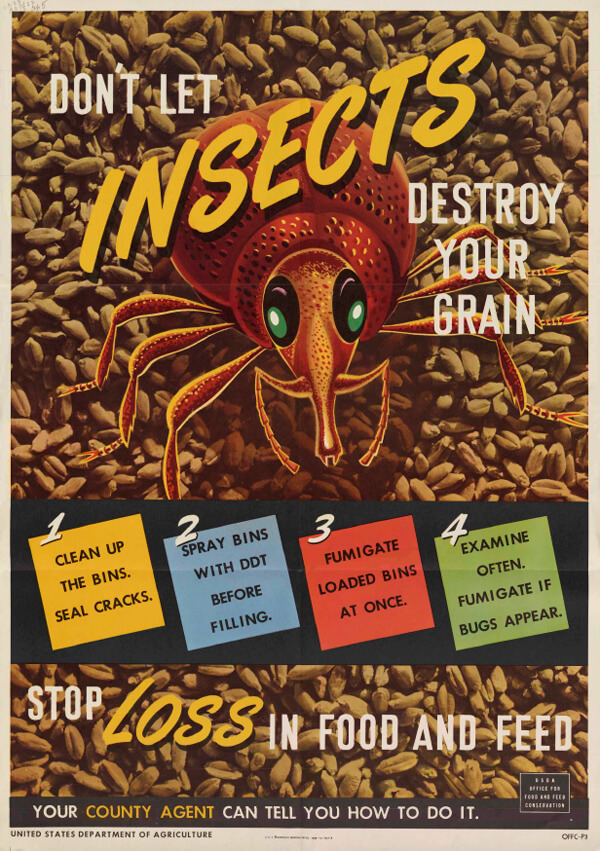
Farmers are urged to use modern methods to fight pests, 1948.
CREDIT: USDA/NATIONAL AGRICULTURAL LIBRARY
1960: Number of horses and mules used for work power: 3 million. Number of tractors: 4.7 million.
1970: Four percent of American workforce employed in agriculture.
1971: President Nixon appoints Earl Butz as agriculture secretary, who champions free markets and exports instead of supply management and urges farmers to plant “fencerow to fencerow.”
1973: Farm Bill (Agriculture and Consumer Protection Act) dismantles some programs that manage supply. Prices are allowed to fall. To help farmers, they are paid the difference between target prices and actual market prices. Food stamp program formally expanded.
1985: First Farm Bill (Food Security Act) to include a specific section devoted to conservation.
1996: Farm Bill (Agriculture Improvement and Reform Act, a.k.a. “Freedom to Farm”) ends supply-management programs. Farmers can grow any commodity crop, in any amount, on any portion of their land. Eliminates payments based on target prices for crops, bases payments on historical yields instead.
1998, 1999: Two acts create emergency payments to farmers after prices for farm goods plummet.
2000: Only 1.9 percent of American workforce employed in agriculture.
2002: Farm production geared toward monoculture. On average, each farm produces fewer than two products such as such as corn, sorghum, cotton or chickens.
2004: Act provides state funding to support research and marketing of “specialty crops” — fruits, vegetables, tree nuts, dried fruits and nursery crops such as ornamental garden plants, this support is incorporated into later Farm Bills.
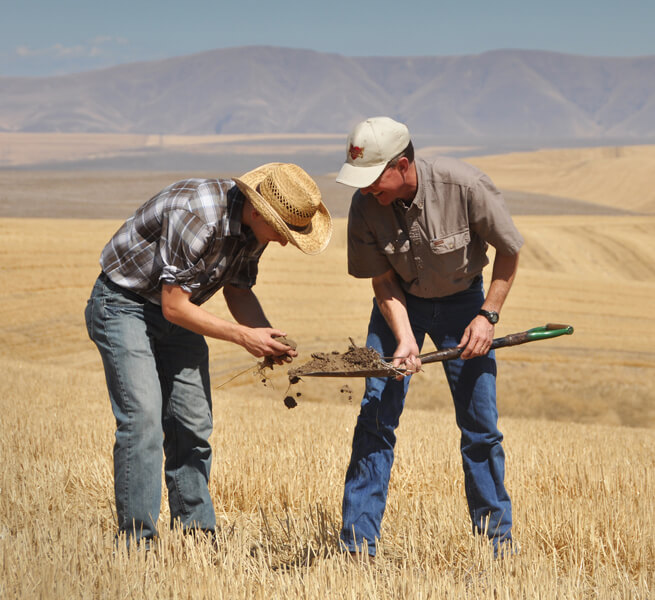
USDA soil conservationists at work in Oregon in 2014.
CREDIT: USDA / NRCS PHOTO BY RON NICHOLS
2014: Farm Bill (Agricultural Act) changes structure of farm subsidies but retains them. Also includes funding for programs providing fresh fruits and vegetables to schools and makes it easier for participants in SNAP (formerly known as the food stamp program) to buy fruits and vegetables.
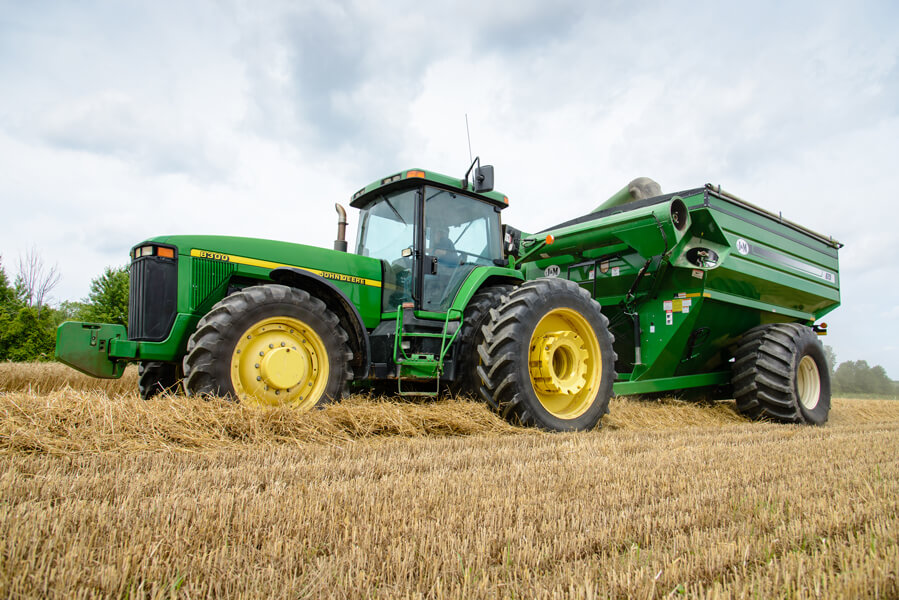
Combine harvester in a Michigan wheat field in 2016.
CREDIT: JOHN E HEINTZ JR / SHUTTERSTOCK
2018: A new Farm Bill is pending. Many issues are up for debate between House and Senate. Proposals include tightening eligibility for SNAP participation, reducing funds for programs aiding socially disadvantaged and beginning farmers, and broadening who can receive commodity crop subsidies.




